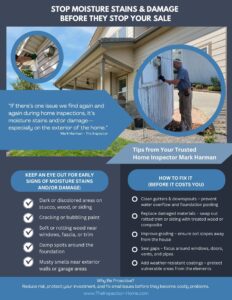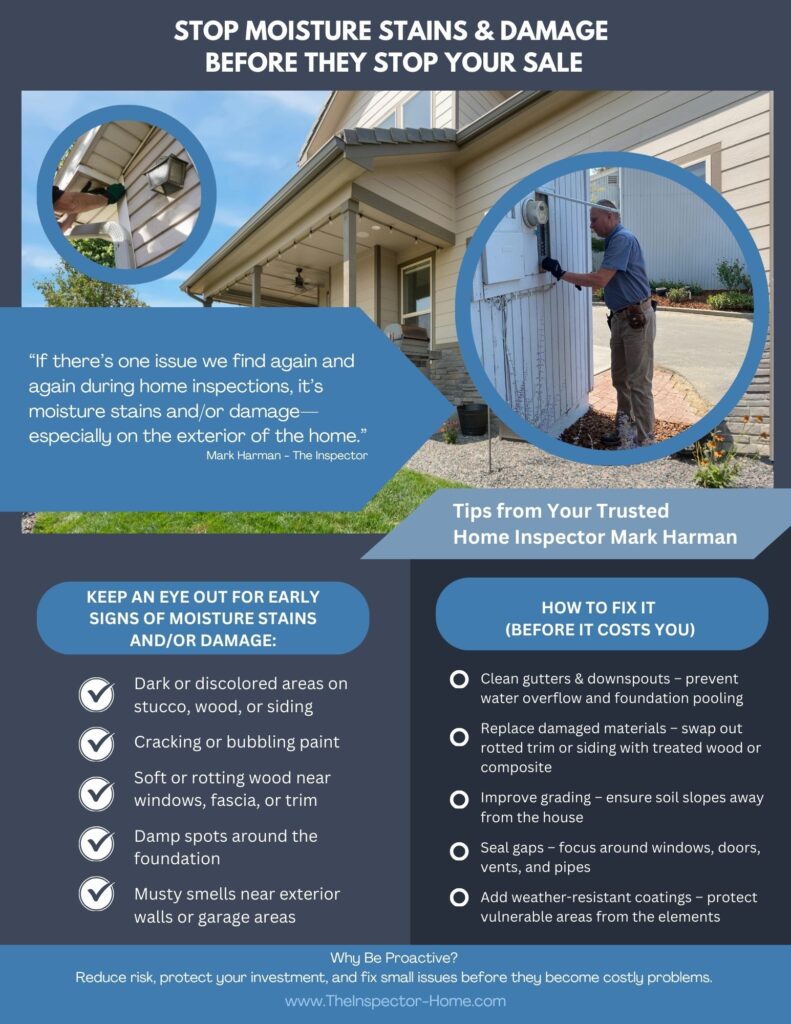🛠️ This Simple Error Might Cost You
🛠️ Stop Moisture Stains & Damage Before They Stop Your Sale
Tips from Your Trusted Home Inspector
Tips from Your Trusted Home Inspector
If there’s one issue we find again and again during home inspections, it’s moisture stains and/or damage—especially on the exterior of the home. From streaked siding to hidden wood rot, these issues can slow down a sale, surprise the seller, and raise red flags for buyers.
The good news? Moisture problems are often preventable with routine upkeep and a trained eye. Here’s what your clients should know when preparing a home to list.
🧱 What to Look For
Keep an eye out for early signs of moisture stains and/or damage:
-
Dark or discolored areas on stucco, wood, or siding
-
Cracking or bubbling paint
-
Soft or rotting wood near windows, fascia, or trim
-
Damp spots around the foundation
-
Musty smells near exterior walls or garage areas
🧰 How to Fix It (Before It Costs You)
-
Clean gutters & downspouts – prevent water overflow and foundation pooling
-
Replace damaged materials – swap out rotted trim or siding with treated wood or composite
-
Seal gaps – focus around windows, doors, vents, and pipes
-
Improve grading – ensure soil slopes away from the house
-
Add weather-resistant coatings – protect vulnerable areas from the elements
🔍 Why a Pre-Listing Inspection Helps
-
Spot moisture stains and/or damage early
-
Make repairs ahead of escrow, on your own timeline
-
Show buyers you’re proactive and transparent
-
Reduce negotiation delays and support a smoother closing
💡 Tip for Agents:
Use this checklist or flyer to educate sellers before listing. Recommending a Pre-Listing Inspection can help uncover moisture stains and/or damage before the buyer’s inspector does.

Download as PDF or JPG to share with your clients

